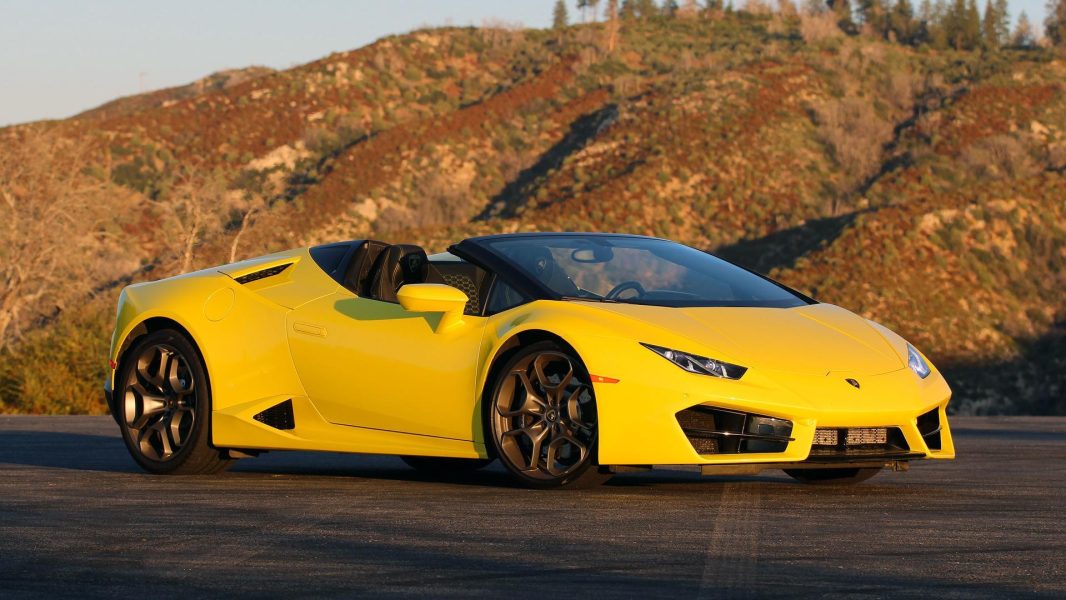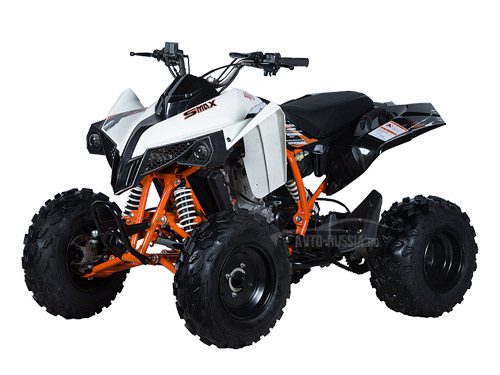
Lamborghini Huracan LP 580-2 Spyder 2017 view
Content
- Is there anything interesting about its design? 8/10
- How practical is the interior space? 6/10
- Does it represent good value for money? What functions does it have? 7/10
- What are the main characteristics of the engine and transmission? 9/10
- How much fuel does it consume? 7/10
- What is it like to drive? 9/10
- What safety equipment is installed? What is the safety rating? 6/10
- How much does it cost to own? What kind of guarantee is provided? 7/10
- Verdict
- Are you going to be roofless or do your sports cars need a roof?
Lamborghini's Huracan is the howling and fiery sequel to Sant' Agata's best-selling model, the wicked V10-powered Gallardo.
The first clean design since Audi took over Lambo in the late 1990s, the new car picked up where the Gallardo left off and sold like crazy. Since its launch a couple of years ago, new variants have come quickly and quickly, with the rear-wheel drive 580-2 joining the LP610-4 as well as the Spyder variants of both. Last month, Lambo ditched the wildness and talked a lot about the Performante (or "totally crazy" version).
The local Lamborghini division made a clever decision to make sure we could kill two birds with one stone by launching us in a Huracan Spyder 580-2. Less power, less roof, less drive wheels, more weight. But does that mean less fun?
| Lamborghini Huracan 2017: 580-2 record | |
|---|---|
| Safety Rating | - |
| engine's type | 5.2L |
| fuel type | Premium unleaded gasoline |
| Fuel efficiency | 11.9l / 100km |
| Landing | 2 Places |
| Price from | No recent ads |
Is there anything interesting about its design? 8/10
While it's an acquired taste, I'm a big fan of the over-the-top Huracan, and the Spyder is an impressive coupe conversion.
The roof is made of fabric and folds down in just 15 seconds, which is more than enough to keep you out of all but the most sudden rain. It looks good when raised, making a decent impression of the coupe's roofline, but without the speedster-style humpback roof, the Huracan looks epic.
Optional 20-inch black Giamo alloy wheels cost $9110. (Image credit: Rhys Vanderside)
It's not a shy and solitary car (unlike the Lambo), and if you like the attention of the local cops, then the bright yellow (Giallo Tenerife) color is for you. One particularly nice touch is the Huracan Spyder lettering etched into the windshield rail.
Unfortunately, there's only a small cap to access the filler neck - unlike the coupe, you can't see the engine through the cap. The back of the Spyder is very different, with a huge composite clamshell that swings out to the side, allowing the roof to fold itself down. It's a necessary compromise, but also a shame.
The cabin is a standard Huracan, with Audi-derived switchgear and a bright red starter button cover that looks like it should say "Bombs Away." There are plenty of fighter jet influences, and it's a more compelling space than the pricier Aventador.
How practical is the interior space? 6/10
Well, the usual mumbling explanation about what to consider, what this car is for and that there is no room for everyday luxury in it will have to be content. You get a cup holder that slides out of the dashboard on the passenger side, and the front boot holds 70 liters. There's not much else you can cram in, although you can probably slip thin objects behind the backs of the front seats. You will play golf on your own.
It's a more comfortable cabin than the Aventador, with more headroom and shoulder room and a better overall driver and passenger position.
Does it represent good value for money? What functions does it have? 7/10
As always, value for money isn't one of your top priorities if you're looking for a high-end sports car with standard features. The stereo only has four speakers, but really, who's going to listen to Kyle when you can reap Huracan's ears?
You also get dual-zone climate control, remote central locking (the flush-mounted knobs pop out charmingly as you approach), LED headlights, daytime running lights and taillights, (very cool) digital instrument cluster, power seats, sat nav, leather trim and a hydraulic lift to help keep the front splitter pristine above the curbs.
The stereo is clearly Audi's MMI, which is a good thing, except it's all crammed into the dashboard without a separate screen.
Naturally, the list of options is long. Our car was equipped with a discreet hand, with 20-inch black Giamo alloy wheels ($9110), front and rear parking sensors with rear view camera ($5700 - ahem), black painted brake calipers ($1800) and Lamborghini logos and a line worth $2400. A very nice stitch, of course.
The flush-fitting handles pop out charmingly as you get closer. (Image credit: Max Clamus)
You can go completely crazy if you want, spending up to $20,000 on matte paint colors, $10,000 on bucket seats, carbon fiber parts can be installed, and then of course you can order things to your personal taste for even more. money. If you're willing to shell out for a car well north of $400,000, I'm thinking a few thousand more.
In terms of value, the Spyder is right for its segment, at about the same price as the admittedly less focused Ferrari California and slightly more expensive than the less powerful R8 Spyder range.
What are the main characteristics of the engine and transmission? 9/10
As the name suggests, the 580-2 is 30 horsepower less than the 610-4. In our language, that means Automobili Lamborghini's 5.2-litre naturally aspirated V10 engine (yes, like many parts shared with the Audi R8) developing 426kW/540Nm. These figures are down by 23 kW and 20 Nm on an all-wheel drive car.
There are many fighter influences. (Image credit: Rhys Vanderside)
The official 0-100 km/h figure is 3.6 seconds, although it's unlikely to be that slow (!), Lambo's numbers are regularly improved by other publications without much effort.
Power is sent to the rear wheels via a highly upgraded dual-clutch transmission from parent company Audi.
How much fuel does it consume? 7/10
The amazing thing about this car is that, despite being subjected to regular thrashing, its fuel consumption is only slightly worse than that of Toyota's large SUV. While driving, it will sip fuel, and turning off the cylinders helps to quench your thirst even more. The combined cycle figure is claimed to be a reasonable (and nearly achievable) 11.9L/100km. I got the calculated 15.2 l / 100 km and did not spare the bar, Nosirrebob. And nothing compares to the horrendous, voracious consumption of the Aventador V12.
What is it like to drive? 9/10
The Huracan V10 is a great thing. He races towards the redline like a demon and does it all day every day. It feels completely unbreakable and transfers its power with such joy and vigor that it penetrates your skin.
With the roof off and sport mode on on the anime switch, the mixture of intake and exhaust noise is highly addictive. It's a theatrical machine, pops, rumbles and metallic squeals under the force - all this together blows the web twice as fast. Its sound is symphonic, and pressing the gear lever changes notes instantly. It's breathtaking.
Much of the charm of this particular car is the switch to rear-wheel drive. Not only did the engineers forget to bolt on the driveshaft and front-wheel drive, but the steering was redesigned to compensate for the changes and improve feel and responsiveness. It worked.
Where the four-wheel drive is prone to mild understeer, the front of the dash is a bit more planted. The Spyder may be heavier than the coupe, but the rear-wheel-drive car feels a little more nimble, with lightning-fast directional changes and a livelier rear end. It's more subtle than -4 and doesn't seem noticeably slower.
The roof is made of fabric and folds in 15 seconds. (Image credit: Max Clamus)
One note about the -4 understeer: It just doesn't make much of a difference. The Internet will tell you that he "underturns like a pig." The internet is completely wrong, but you already knew that; The internet loves cat videos. No one blames the Ferrari California for the same vice, but it also has slightly understeer as standard (unlike the HS) - it's intentional, safer and more comfortable. However, it is not a pig.
Anyway. On the show.
To keep the cost down, the 580-2 also comes with steel brakes, with expensive carbon ceramic as an option. On the road, you won't notice much of a difference other than a slightly different pedal feel. This probably makes the Huracan a less efficient race car, but the reality is that there aren't many owners, especially Spyder buyers.
One particularly nice touch is the Huracan Spyder lettering etched into the windshield rail. (Image credit: Max Clamus)
Most of the time I spent in sport mode - it is in it that you can find the most pleasure, when the electronics are more relaxed about the behavior of the car. The electric throttle is nice and snappy, the steering is a bit hefty, and the seven-speed dual-clutch transmission (or as I like to say at every opportunity, doppio frizione). The Corsa is certainly fast, but much more interested in getting the car right and out of the corner. Don't worry about the Strada mode - it's too bland and completely unattractive.
Warranty and safety rating
Basic Warranty
3 years / unlimited mileage
guarantee
What safety equipment is installed? What is the safety rating? 6/10
The Huracan has four airbags, ABS, stability and traction control, and brake force distribution. The heavy-duty carbon fiber and aluminum space frame will withstand the rigors of a crash.
As you might expect, there is no ANCAP safety rating, and neither is its R8 blood relative.
How much does it cost to own? What kind of guarantee is provided? 7/10
The Huracan comes with a three year unlimited mileage warranty. Considering the usual mileage of such a car, this is quite enough. In addition, there's three years of roadside assistance and the option to extend the warranty - $6900 for one year and $13,400 for two, which seems about right considering what can go wrong in such a complex car.
Service intervals are an absurdly reasonable 15,000 km, even though you have to visit the dealer once a year (mainly so you can order your next Lambo).
Verdict
The rear-wheel drive Spyder couldn't be more fun if it wore a goofy wig or grew a jet engine and fenders.
Yes, it's heavier and slower than the coupe, but the Huracan doesn't lose much of its off-top feel, plus you get all the fun and fresh air from the Spyder. The extra weight doesn't matter much on the road, and the added bonus of more responsive rear-wheel drive steering and even sharper cornering smooths things out.
The V10 is the latest of its kind, and both Ferrari and McLaren use supercharged V8s for their small sports cars - in McLaren's case, all of them. The Huracan Spyder has everything that's good about a Lamborghini: crazy looks, crazy engine, dizzying theatrics, and all the bad stuff thrown out by parent company Audi. The 580-2 doesn't lose any of the fun of the circus, and with the roof off, the music is even louder to your ears.
Are you going to be roofless or do your sports cars need a roof?
